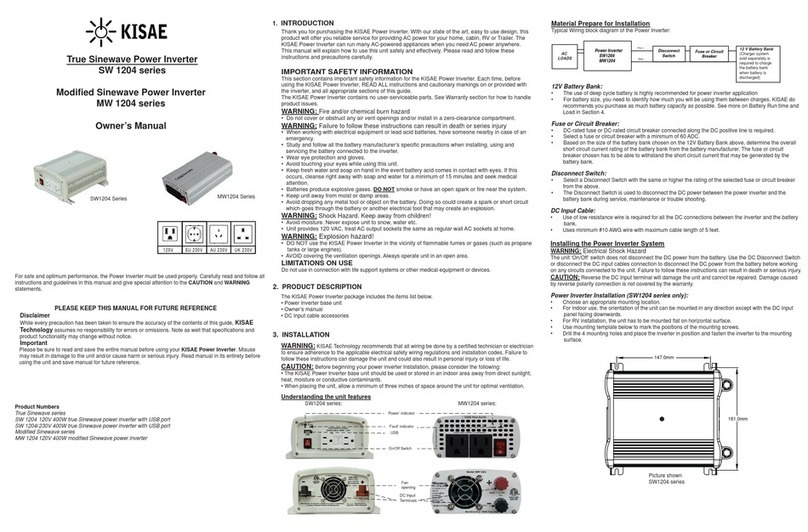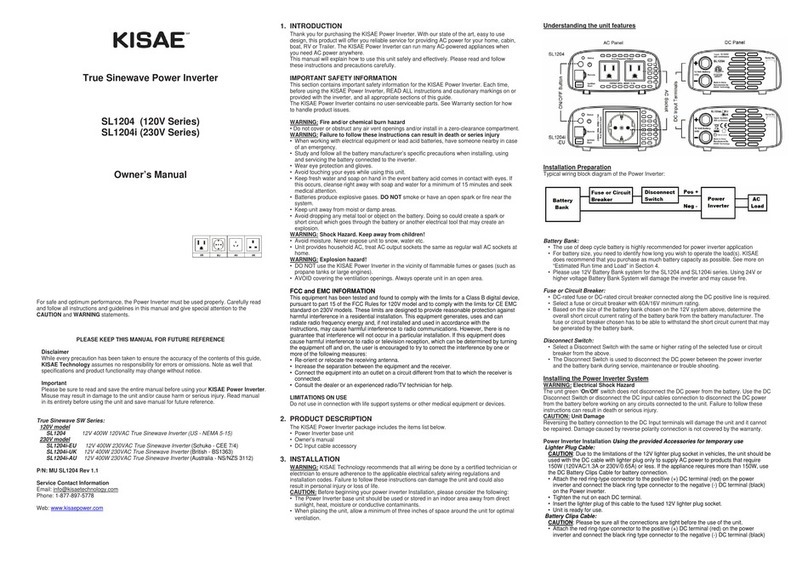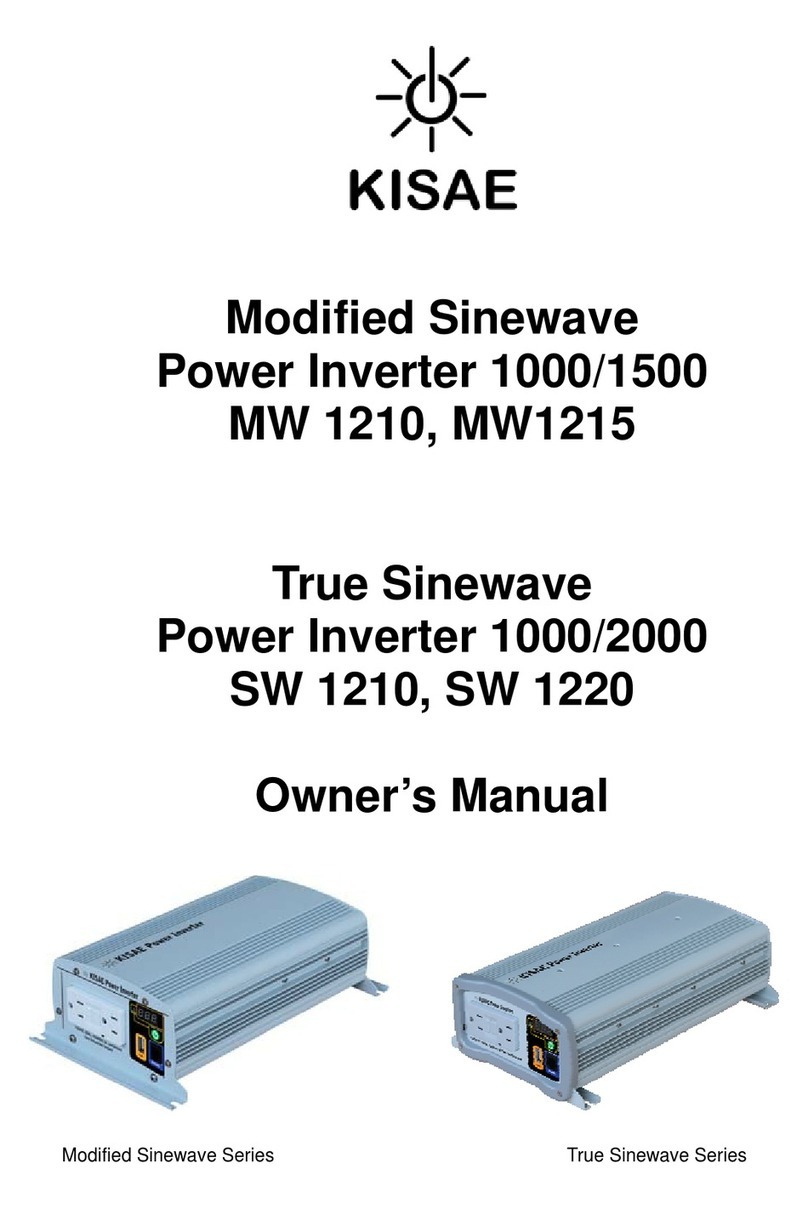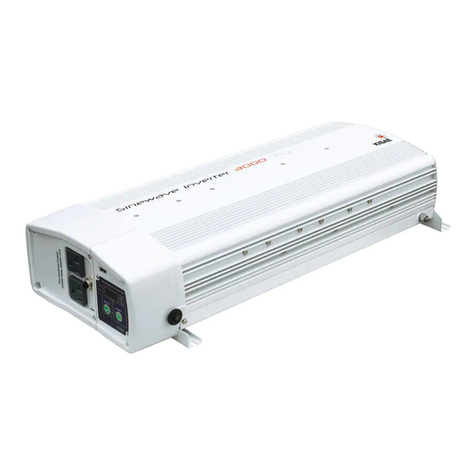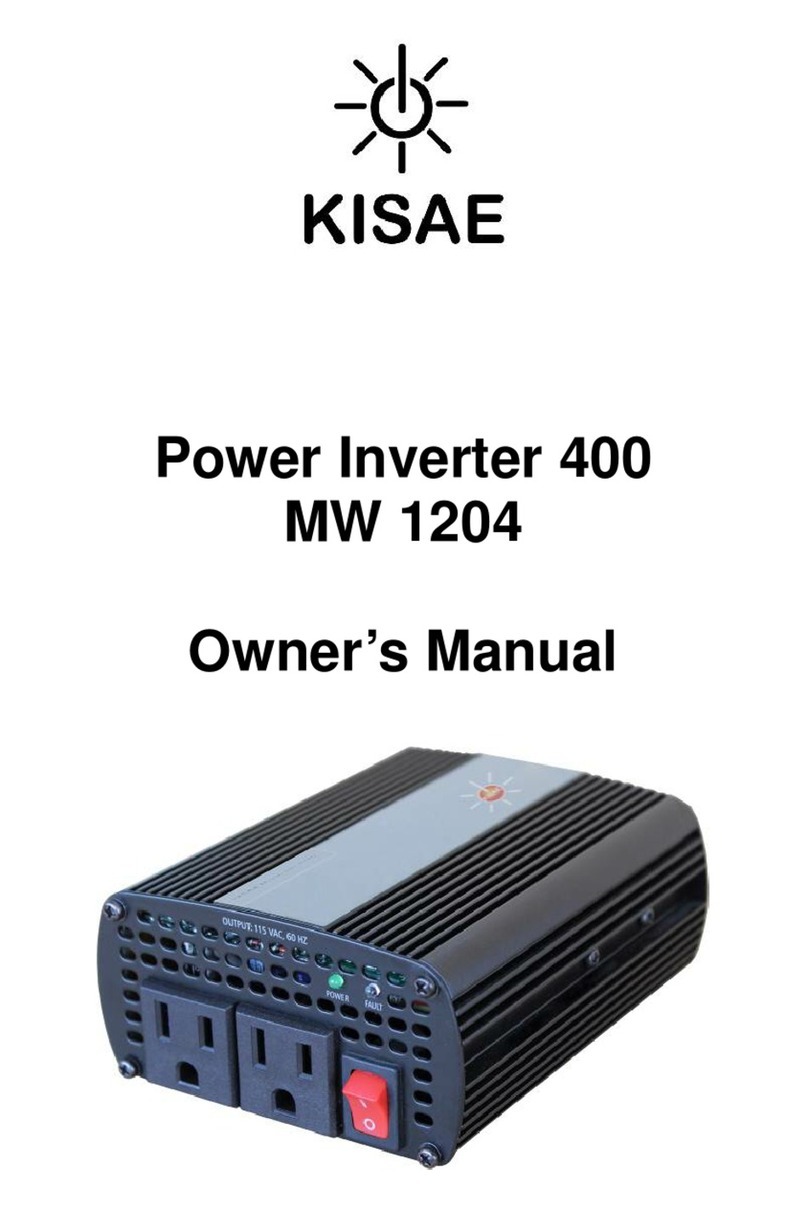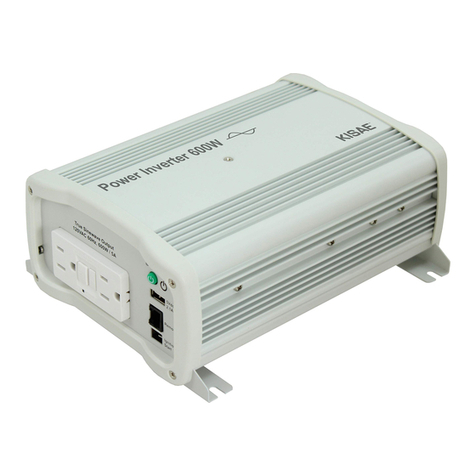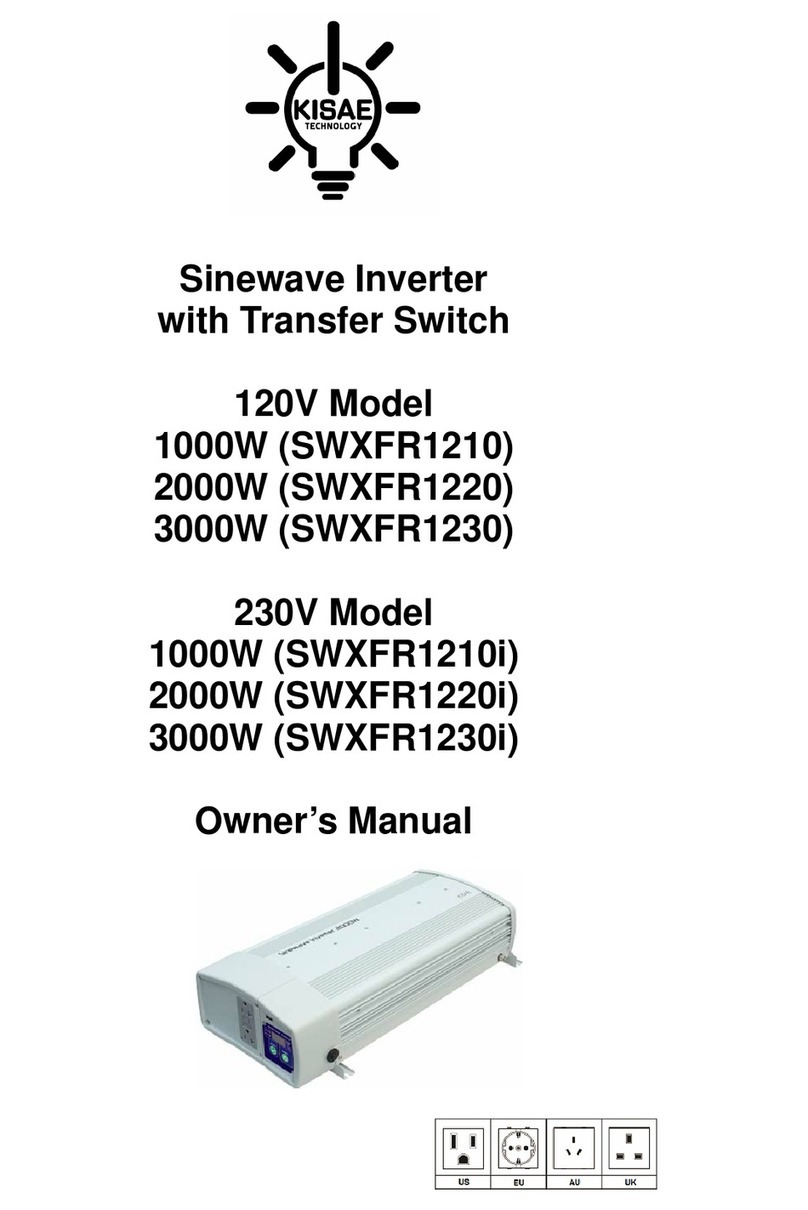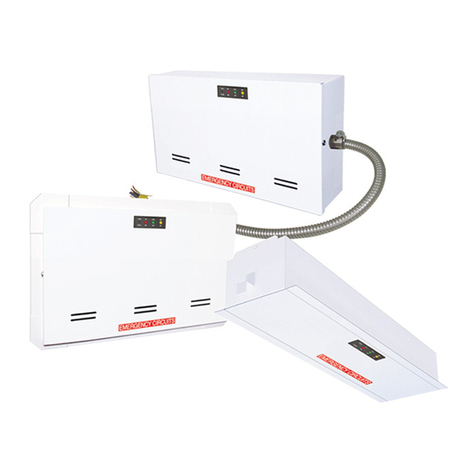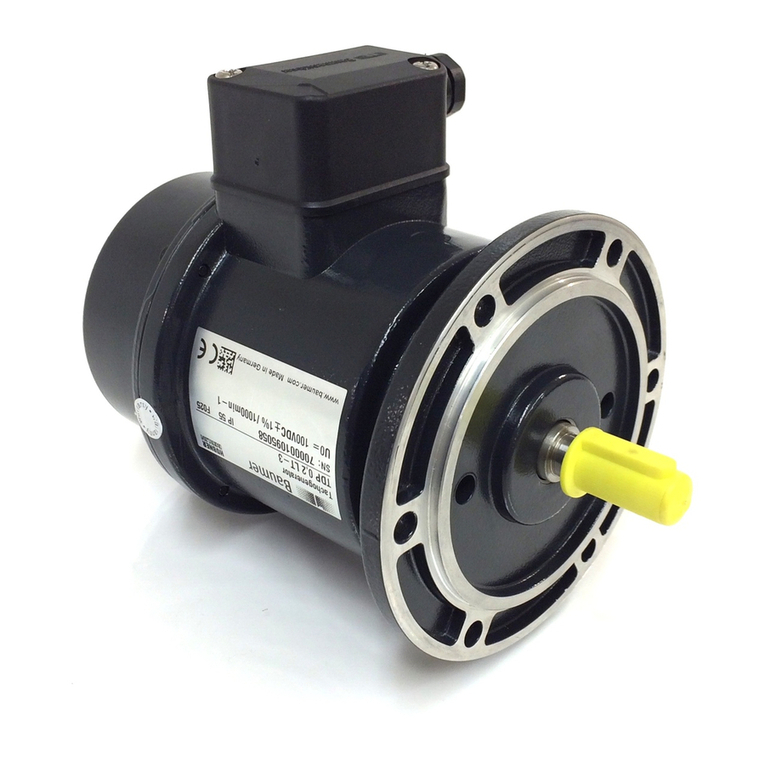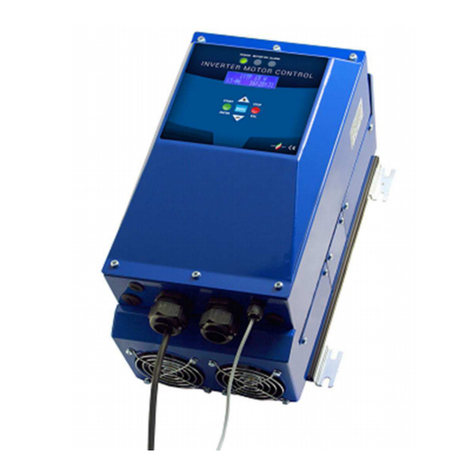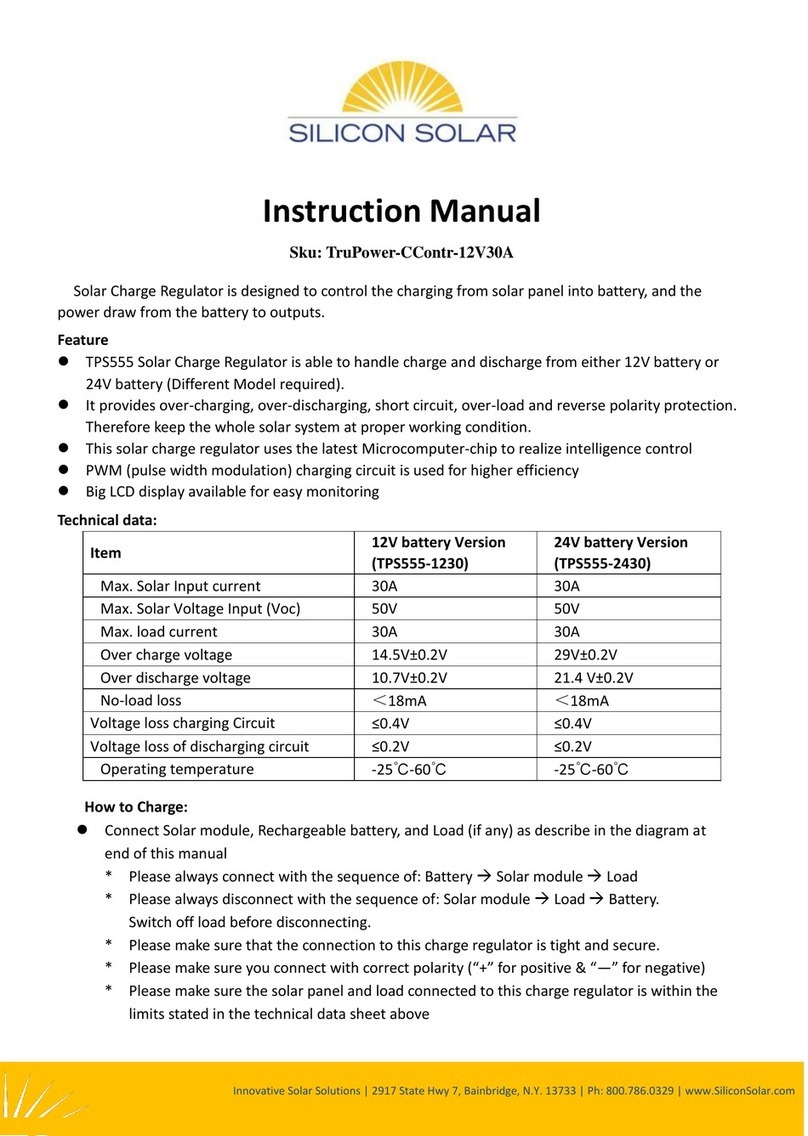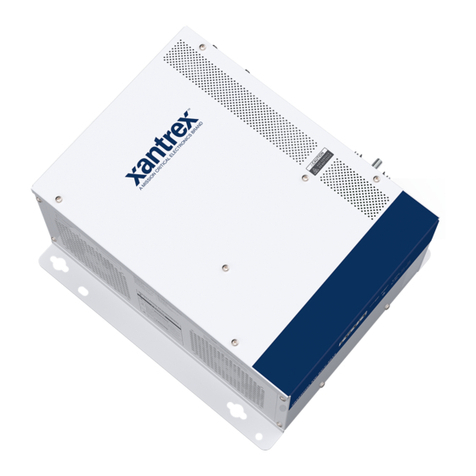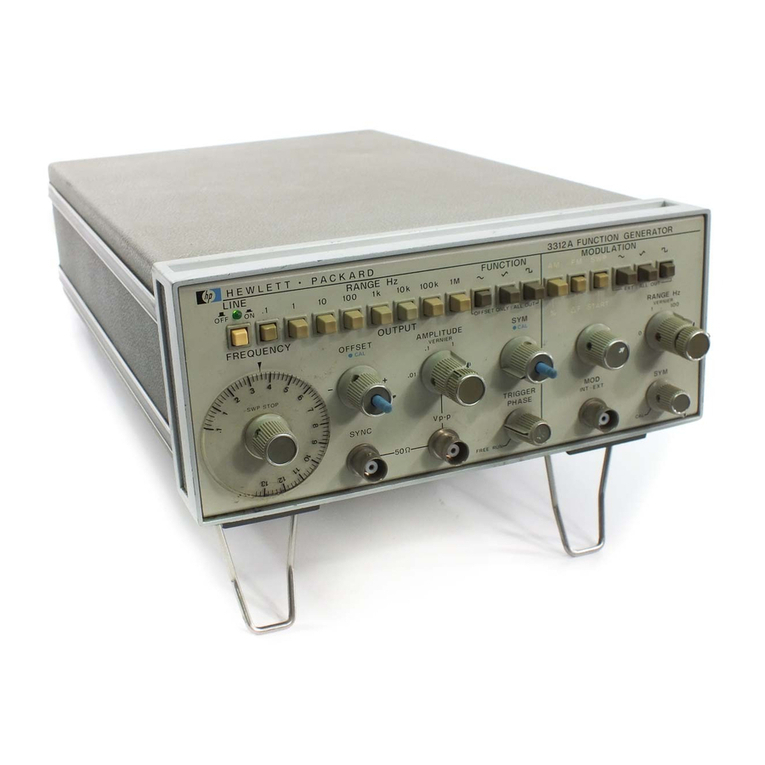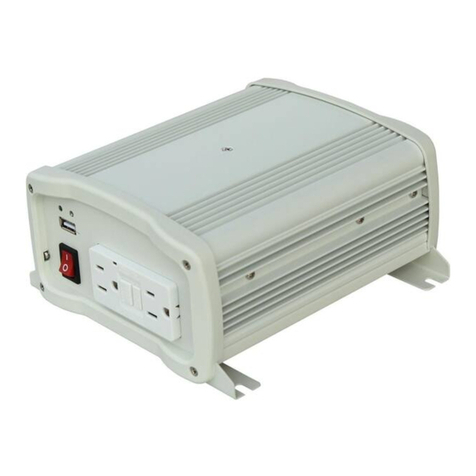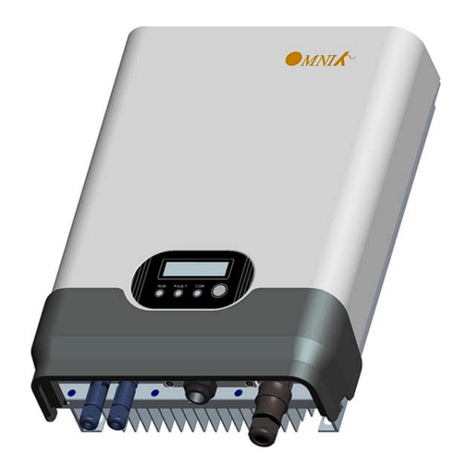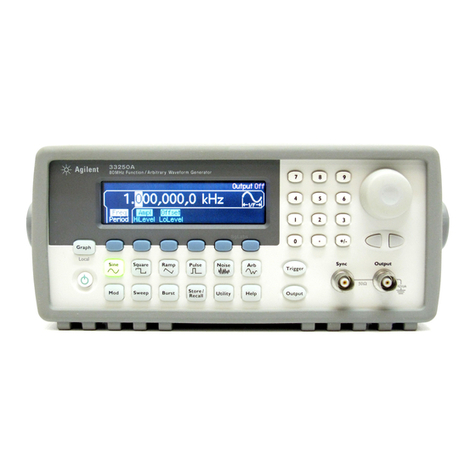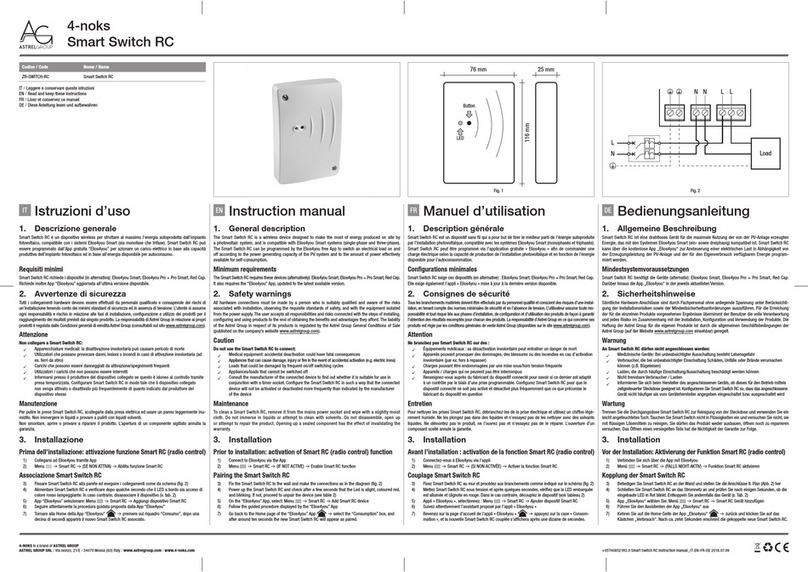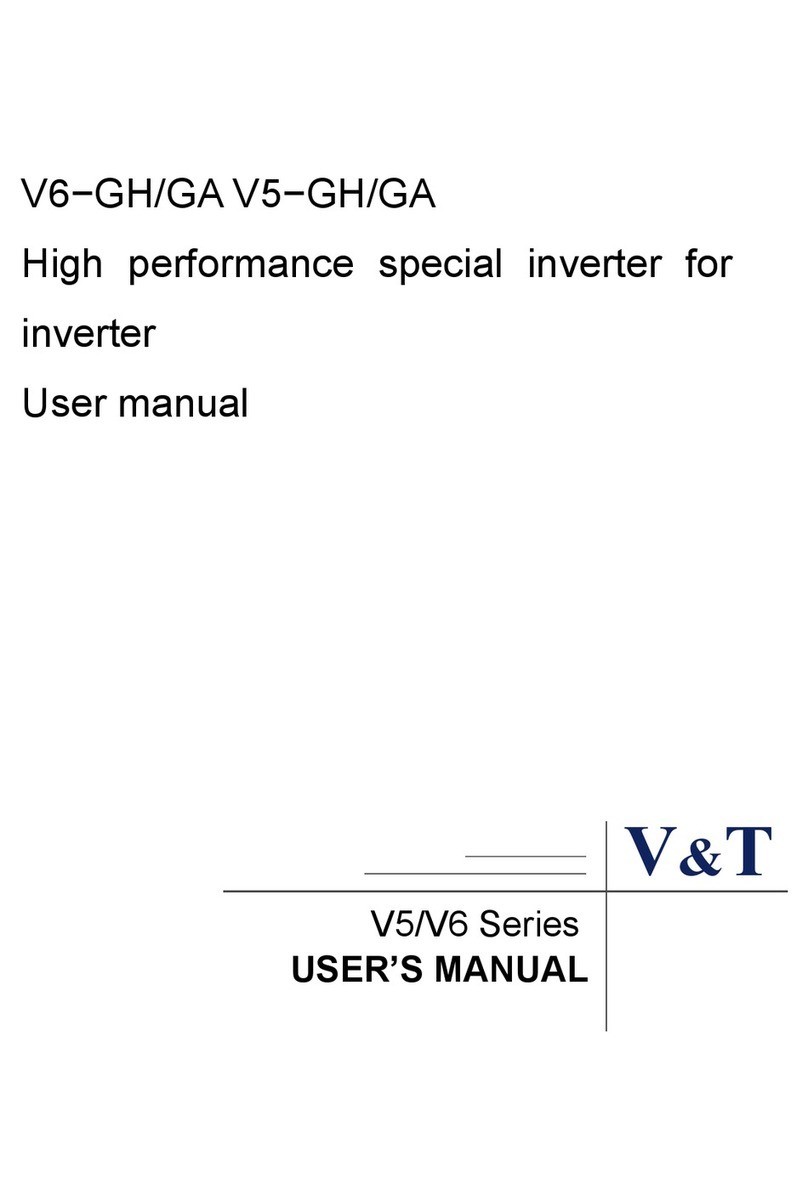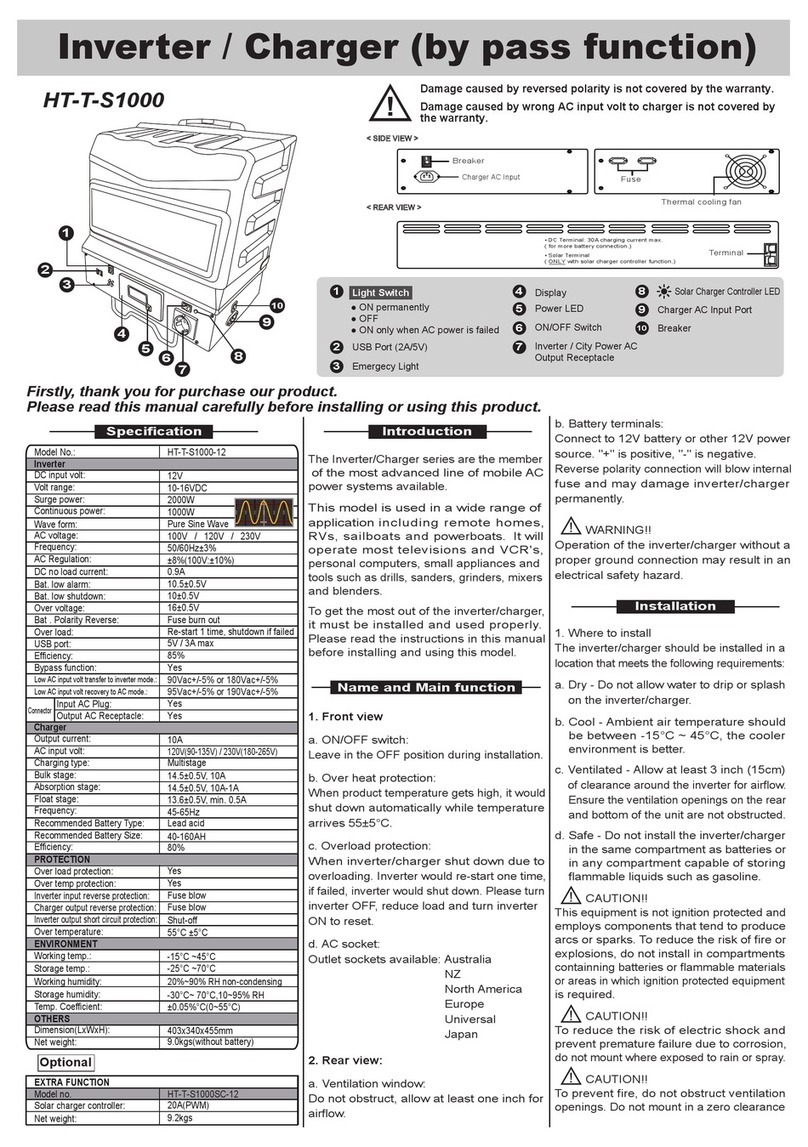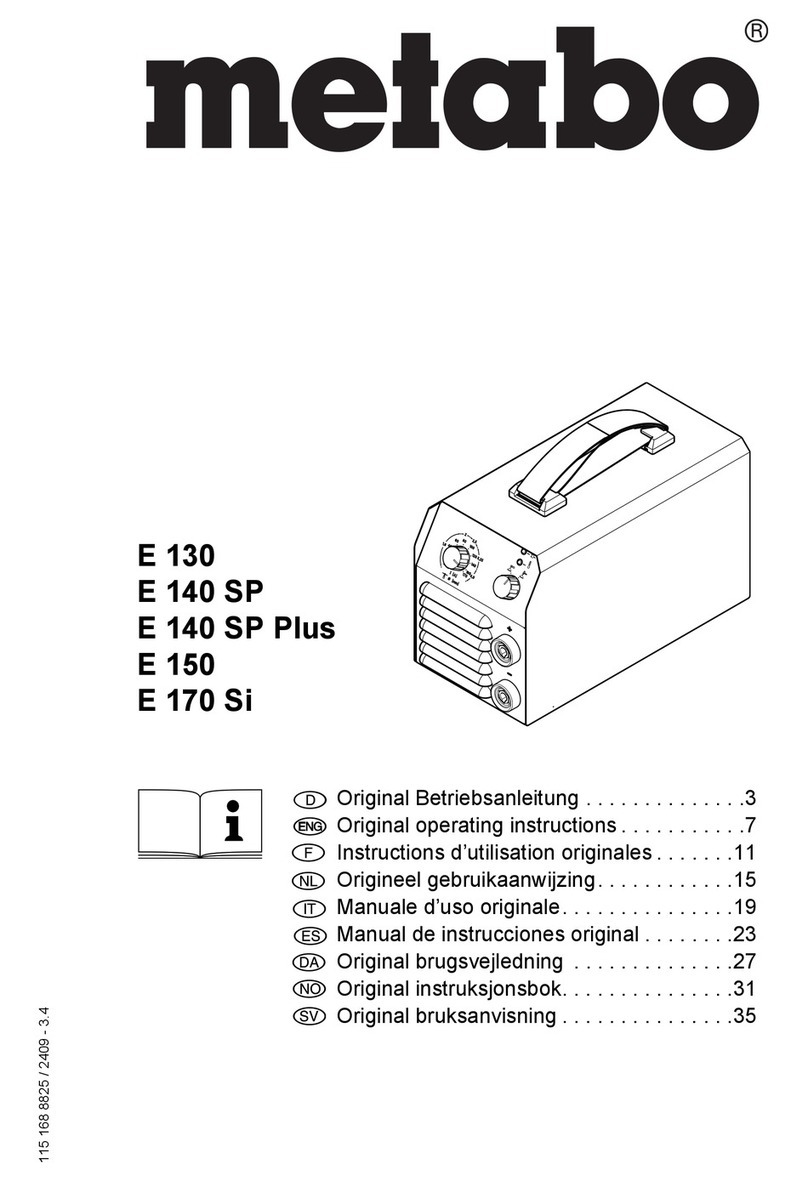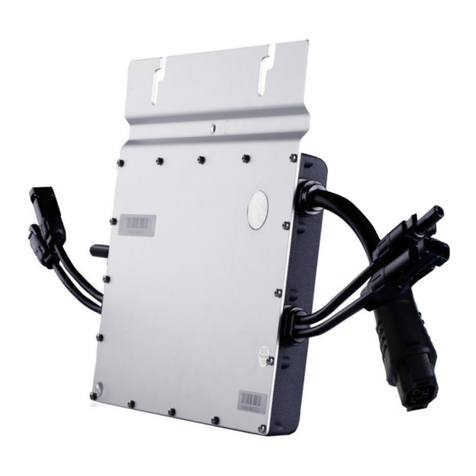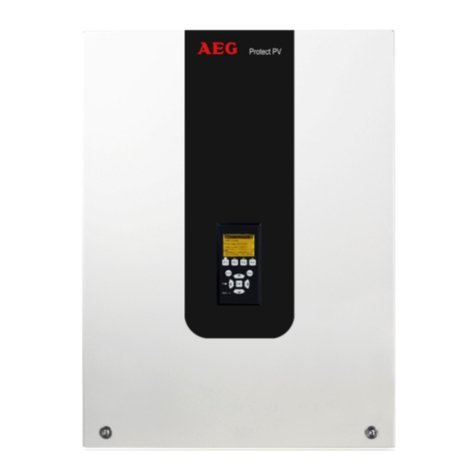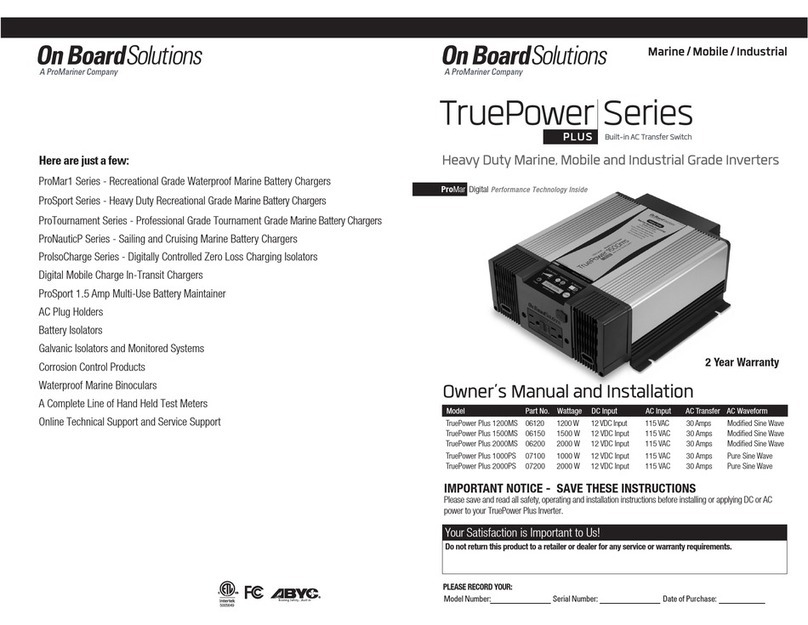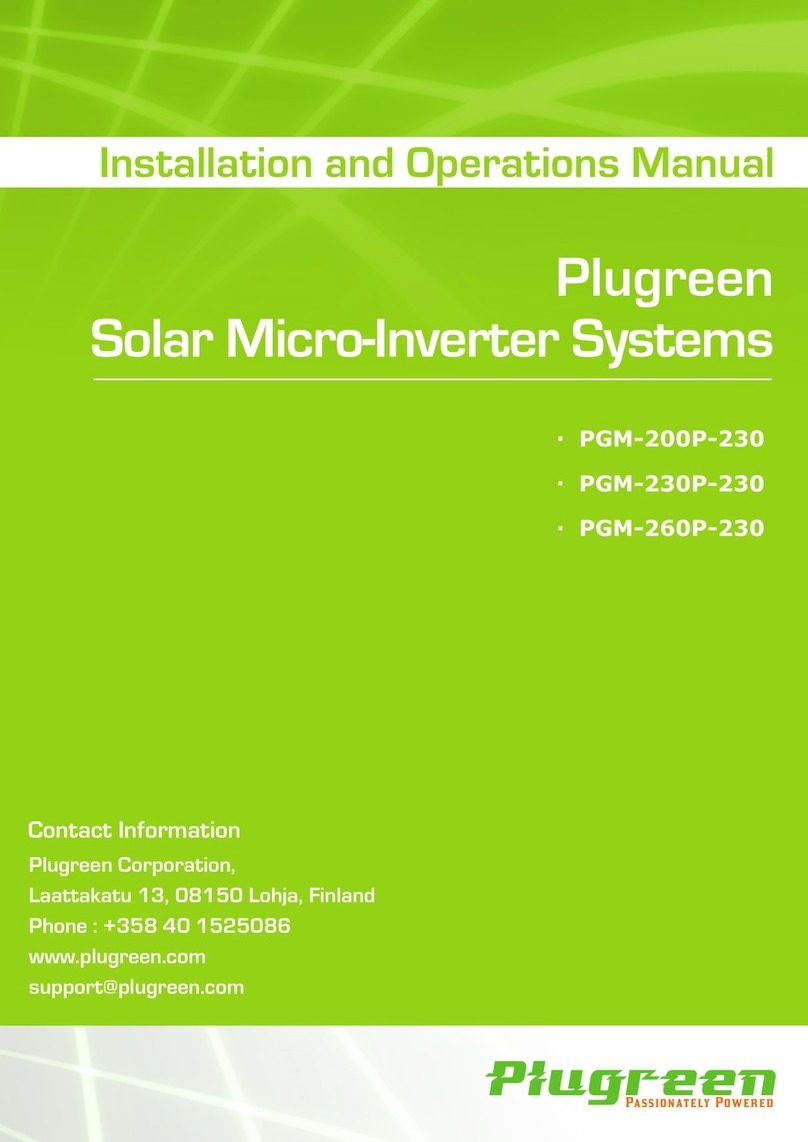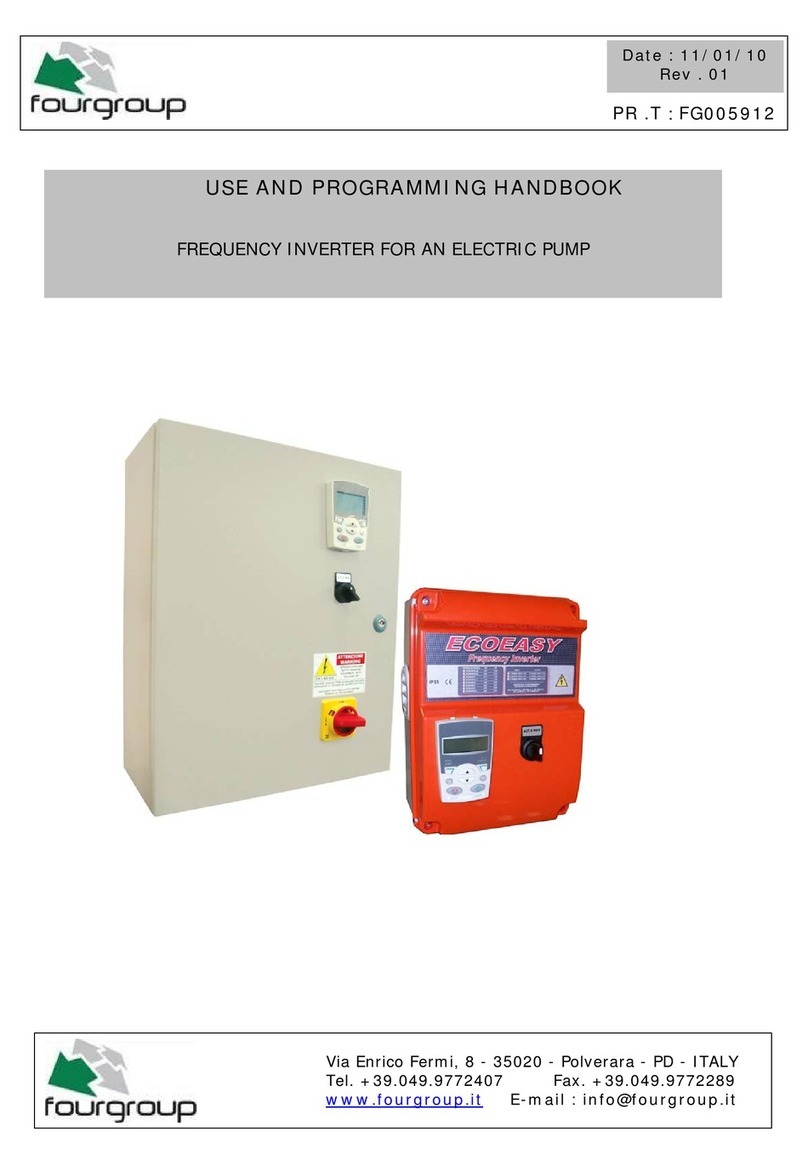Page 7
personal injury or loss of life.
CAUTION:Before beginning unit installation, please consider the following:
•The unit should be used or stored in an indoor area away from direct sunlight, heat, moisture
or conductive contaminants.
•When placing the unit, allow a minimum of three inches of space around the unit for optimal
ventilation.
Preparing for Installation
Input AC Source, AC Loads and AC Output Neutral Bonding for IC1220100
Before you begin the installation, be sure to review the Important Safety Instruction on page 3 of
this manual and be aware of all safety and electrical codes which must be met in your area.
AC Input of the inverter charger can be supplied a split-phase AC Source. See below to
understand more about the unit before you start your installation.
•Input AC Source:
A single phase AC Source 1 line, 1 neutral and 1 ground is required.
•AC Loads:
In Battery mode, the unit’s AC Output provides 120VAC.
In Pass-Through mode, the AC Source connected to the unit’s AC input is passed through to
the AC Output (load).
DANGER: Electrical Shock Hazard. Do not connect 240VAC load to the AC Output of
the unit.
•AC Output Neutral Bonding:
Each AC Source must have its neutral conductor bonded to ground.
When the KISAE Inverter-Charger is running in Battery mode, the internal neutral-to-ground
bonding system is enabled. The unit will act as an AC Source and will automatically connect
the AC Output Neutral circuit to safety ground.
When the unit is running in Pass-Through mode, the internal neutral-to-ground bonding
system is disabled. The unit will not act as an AC Source and the AC Output to safety
ground is disconnected inside the unit. Therefore, the AC Input source that is connected to
the Inverter-Charger should have its own neutral-to-ground connection. If not, have an
electrician look into bonding the AC Source’s neutral to ground at your AC Source.
Input AC Source, AC Loads and AC Output Neutral Bonding for IC1230150
Before you begin the installation, be sure to review the Important Safety Instruction on page 3 of
this manual and be aware of all safety and electrical codes which must be met in your area.
AC Input of the inverter charger can be supplied from either a split-phase or a dual-input AC
Source. See below to understand more about the unit before you start your installation.
•Input AC Source from Split-Phase:
The split-phase AC Source has 2 lines, 1 neutral and 1 ground. The two 120Vac lines are
180 degree out of phase with each other with a total of 240Vac when measured from line to
line. The voltage between each line to neutral is 120Vac.
•Input AC Source from Dual Input:
The dual input has 2 line inputs, 1 neutral and 1 ground. The two 120Vac lines are in phase
and must come from the same source.
•AC Loads:
In Battery-Inverter mode, the unit’s AC Output L1 and L2 lines are connected together to
provide 120Vac on both lines.
In Pass-Through mode, the AC Source connected to the unit’s AC input is passed through to
the AC Output (load).
DANGER: Electrical Shock Hazard. Do not connect 240VAC load to the AC Output of
the unit.
•AC Output Neutral Bonding:
Each AC Source must have its neutral conductor bonded to ground.
When the KISAE Inverter-Charger is running in Battery-Inverter mode, the internal neutral-
to-ground bonding system is enabled. The unit will act as an AC Source and will
automatically connect the AC Output Neutral (N1 & N2) circuit to safety ground.
When the unit is running in Pass-Through mode, the internal neutral-to-ground bonding
system is disabled. The unit will not act as an AC Source and the AC Output (N1 & N2) to
